Our bleed control kits feature a selection of products to treat different types of critical bleed injury and are available with a range of contents and in a variety of containers to suit every requirement depending on risks present. Recommended for organisations looking to supplement existing basic first aid provision with a selection of additional products suitable for treating major bleeding and can be used with minimal first aid knowledge. These kits are also ideal for use by emergency medical professionals.
Bleed Control/Trauma Dressings & Bandages
Having a supply of Trauma Dressings & Bandages to treat major bleed injuries before emergency services arrive is simple to do to and saves lives.
Workplaces or sites with any hazards such as machinery, sharp or moving objects which have potential to cause critical injuries such as major bleeding must have 'adequate and appropriate’ first aid for any risks present. Alongside other health and safety measures, this may be achieved by adding bleed control products to existing first aid provisions.
Furthermore, public premises and events are strongly encouraged by ProtectUK and the National Counter Terrorism Security Office (NaCTSO) to provide access to products to treat traumatic injuries such as major bleeding.

Designed to stop life-threatening bleeding before receiving professional medical attention
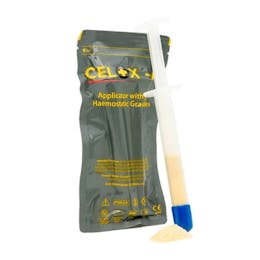
Life saving tool that can be quickly applied in small entry wounds to form a robust clot to stop severe bleeding

High performance haemostatic dressing to control severe bleeding in conjunction with a pressure bandage or tourniquet
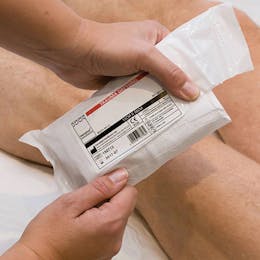
Emergency trauma dressings are thicker and more robust than regular dressings to help absorb heavy bleeding
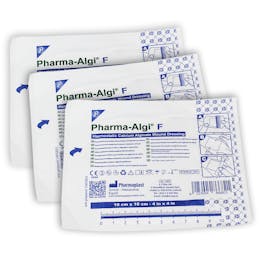
High absorption capacity reduces the risk of infection and discomfort

- Designed to manage major bleed trauma
- Secure in place quickly with a Velcro-style fixing

Trauma dressing with heavy-duty compression bandage provides immediate direct pressure

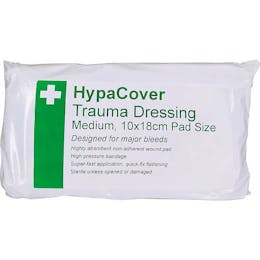
- Designed to manage severe wounds, these dressings are an essential addition for your emergency response kits

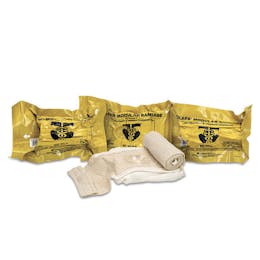
- Whether you are a professional or a first-time caregiver, this bandage offers unparalleled versatility and effectiveness

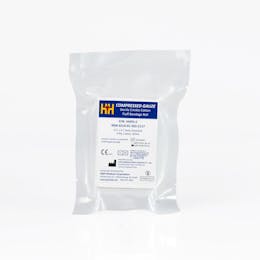
- High-quality, 6-ply cotton construction absorbs fluids effectively, providing stability and support for large wound areas

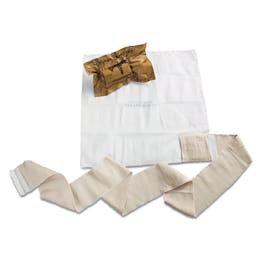
- Designed to manage large wounds effectively, from severe burns to shrapnel injuries


- High-quality trauma dressing designed to easily apply pressure to severe wounds, helping to control blood loss in emergencies

This specialist vented chest seal dressing will provide a secure and airtight seal over an open chest wound while allowing controlled ventilation

Designed to stop life-threatening bleeding before receiving professional medical attention


Keeps wounds clear from debris – made from 100% chitosan for faster haematosis

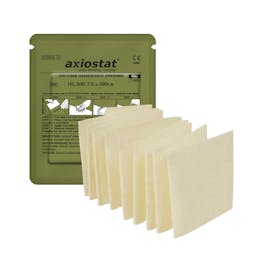
Can be packed into deep wounds to form a mechanical barrier on the bleeding site

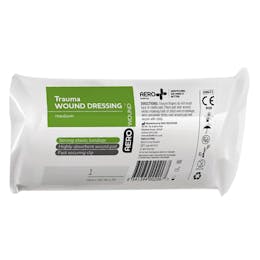
- Experience Advanced Healing with AeroWound™ Dressings - Your First Choice in Trauma Care


- Haemostat for Fast-Acting Bleeding Control, trusted by emergency services military professionals.


- Reliable, Compact, and Ready: Foxseal Chest Seal for Chest Trauma


Super-absorbent and compact trauma dressing designed to control excessive or heavy bleeding
Which Bleed Control Products Do I Need?
We offer a market leading range of Trauma and Bleed Control Kits in a range of formats from single person treatments to mass casualty options where life saving supplies can be deployed for rapid treatment of multiple individuals.
Our range is based around likely scenarios to be considered in risk assessments across a wide range of premises, so there is a simple, practical and attainable solution available for all kinds of organisation.
We also offer a comprehensive range of refill items featuring dozens of individual components featured within the various type of trauma and bleed control kits. Buying individual items is ideal for organisations and medical professionals to supplement their existing supplies, or for where there may be a specific risk or product need. We offer a full selection of the biggest and most reliable brands in this area.
To help decide which Trauma Bleed Control products your organisation may need to meet its first aid obligations we have created the below guide which summarises each product type, their applications and purchasing considerations:
Bleed Control Kits
Recommended for organisations looking to supplement existing basic first aid provision

Workplace Critical Injury Kits
These kits are also designed with contents that can be used with minimal first aid knowledge

These kits have been specifically designed in line with the BS8599-1 standard to be issued as a supplementary resource to small, medium or large first aid kits for workplaces or lone working where there is a hazard that could result in a critical injury such as a major bleed.
PAcT Kits
Protect UK state that: "All public and private sector organisations are encouraged to include PAcT First Aid Kits within the first aid provisions they have in place. They are an additional lifesaving resource which improves an organisation’s first aid resilience."
"PAcT First Aid Kits should be commonplace across the UK. Aside from bridging the gap until the emergency services arrive, PAcT First Aid Kits are recognised by all the emergency services, police, ambulance and fire service, across the whole country, which means PAcT First Aid Kits will form part of their first aid response planning too."

A Public Access Trauma First Aid Kit, also referred to as a PAcT First Aid Kit is a first aid kit which supports the treatment of immediate, life-threatening injuries such as major bleeding and those who are unresponsive with absent or abnormal breathing. They primarily exist to provide life-saving provisions to anyone in the vicinity during mass casualty events, such as terrorist attacks.
PAcT First Aid Kits are designed to be used by anyone, regardless of their level of first aid training, and supports the first aid efforts until the emergency services arrive. PAcT First Aid Kits should be placed in locations that are public and easily accessible, enabling even an injured person capable of self-treatment (often referred to as ‘walking wounded’) to use them.
"PAcT First Aid Kits should be commonplace across the UK. Aside from bridging the gap until the emergency services arrive, PAcT First Aid Kits are recognised by all the emergency services, police, ambulance and fire service, across the whole country, which means PAcT First Aid Kits will form part of their first aid response planning too."
Our PAcT kits go further to meeting recommendations as standard by featuring glow in the dark labelling in case there is loss of power in an emergency, and we also offer signage and dedicated PAcT points over and above basic kits, also on a glow in the dark material.
Tourniquets
Used to restrict blood flow to injured areas and reduce blood loss.

A staple in all bleed control and trauma kits and often the first item that should first responders should look to apply to control blood loss, particularly on severe injuries to limbs. For major bleeds where trauma dressings or haemostatic dressings would not sufficiently control blood loss, tourniquets are applied to stop the flow of blood to an area of the body using pressure.
We offer a range of windlass style tourniquets up to military grade, which provide the highest levels of pressure without the need for a high level of strength, and are suitable for treating the most severe of traumatic bleed injuries. We also supply zip-tie style tourniquets for extreme ease of rapid application in an emergency.
In previous terror attacks in the UK, due to a lack of appropriate supplies readily available, many casualties were treated with makeshift tourniquets such as ties, belts and scarves.
It is important to note the time tourniquets are applied so when emergency services arrive, they know how long blood flow has been restricted to an area of the body. This is why pens are included in many of the kits with tourniquets.
Trauma Dressings
Essential item for treating moderate to severe bleed injuries.

Trauma dressings feature large, thick absorbent pads, and elasticated straps with an integrated fixing, usually Velcro. This helps to instantly apply direct pressure to wounds to stem blood flow, at the same time as absorbing blood and providing protection from contaminants. Depending on the severity and location of the wound, haemostatic products and tourniquets may be used in conjunction with trauma dressings. Trauma dressings are supplied vacuum packed, are low cost, and can be easily added to existing first aid supplies.
Haemostatic Dressings
Haemostatic dressings can be easily added to existing first aid supplies.

Effective for controlling severe bleeding in areas where a tourniquet cannot be used, and effective on smaller ‘neater’ injuries where bleeding is too much for standard first aid items. Haemostat products feature various agents specifically designed to encourage blood clotting, reduce blood loss, and improve results in emergency trauma situations.
Haemostatic Granules
Granules can be quickly and easily applied directly to deep penetrating wounds

Available with or without an applicator, granules can be quickly and easily applied directly to deep penetrating wounds, such as stab injuries to encourage blood clotting and minimise blood loss if a tourniquet cannot be used.
Gauze
For packing deep wounds to stem blood flow and reduce blood loss

Supplied in Z folded lengths of up to 3m – for injuries where a tourniquet cannot be used, gauze is used to ‘pack’ wounds before applying pressure to stem blood flow and reduce blood loss. Available with or without added haemostatic agents.
Chest Seals
Offer an efficient way to protect the chest cavity

Designed specifically for shielding the chest cavity from respiratory hazards caused by deep puncture wounds. Air entering the chest cavity through a wound can severely impair breathing if the chest has been deeply punctured. Chest seals offer a rapid and efficient way to protect the chest cavity in such instances.
Other Items
All first aid provisions must be easy to access and clearly signposted

Other Items to facilitate effective treatment include shears to cut clothing, resuscitation products for unresponsive casualties, foil blankets to manage shock, PPE to minimise cross contamination during treatment, and casualty handling equipment like stretchers.
Given the nature of injuries that can occur in mass casualty events from incidents such as bomb blasts, additional supplies of first aid to treat burn injuries and eye injuries are also recommended.
As with all existing first aid provisions and publicly available equipment, these kits should be regularly inspected and any damaged or expired items should be replaced – consider holding back up stocks where appropriate. This planning and maintenance helps to preserve the kit's reliability and minimizes the effects of theft or vandalism.
All first aid provisions must be easy to access and clearly signposted. Consider using recognisable, obvious and compliant safety signage with regular reminders to ensure that life-saving first aid provisions can be quickly and easily located when time is of the essence.
Why Should I Enhance My First Aid Provisions?
Basic first aid provision is a legal requirement and is common among organisations. However, enhanced first aid provision and preparedness is also strongly recommended by several official bodies in everyday settings:
Public premises and events

Public premises and events are strongly encouraged by ProtectUK and the National Counter Terrorism Security Office (NaCTSO) to provide Public Access Trauma (PaCT) kits. Furthermore, 'Martyn’s Law' is a bill being pursued by government, which would mandate any public premises or event with a capacity of over 200 to consider the risks arising from a terrorist attack and have plans in place to mitigate physical harm in the event of one occurring.
Workplaces or sites with any hazards

Workplaces or sites with any hazards such as machinery, sharp or moving objects which have potential to cause critical injuries such as major bleeding must have 'adequate and appropriate’ first aid for any risks present. Alongside other health and safety measures, this may be achieved by adding bleed control products to existing first aid provisions, or adding Workplace Critical Injury Packs compliant to BS8599-1.

Whether the risk being considered is a terrorist/public attack or a serious accident on site – major bleed injuries are often a fatal consequence. However, they can be treated with readily available and affordable equipment, which can be used with minimal or no training. The sooner a person with life threatening injuries receives appropriate first aid and treatment, the greater their chances of survival.
Basic first aid provisions such as an HSE or BS8599-1 compliant first aid kit do not have any items to treat major bleeding, yet thousands of UK workplaces and sites will have machinery or equipment which could cause a critical injury in the event of an accident or malfunction.
Many workplaces, organisations, public premises and events provide defibrillators which save hundreds of lives every year. Trauma and Bleed Control provisions are significantly more affordable, easier to implement and could save multiple lives in the event of a mass casualty situation.
There have been 14 terror attacks in the UK since the start of 2017. Furthermore, the UK's Intelligence Services and Counter Terrorism Policing have disrupted 39 late-stage terror attacks and are investigating 800 live cases annually.
Subsequently, the threat level facing the UK is currently set at 'substantial', meaning an attack is likely.
What Should I Consider When Enhancing First Aid Provisions?
The Health and Safety Executive state “First aid provision must be 'adequate and appropriate in the circumstances'. This means that you must provide sufficient first aid equipment (first aid kit), facilities and personnel at all times”.
First aid supplies should be placed in locations that are accessible to the public and usable by individuals, irrespective of their training background.
As part of their counter terrorism awareness guidance, ProtectUK and the National Counter Terrorism Security Office (NaCTSO) recommend that first aid provisions ‘should support the administrating of immediate, lifesaving first aid’.
The provisions should be ‘well advertised across the premises’ and be clearly signposted, ensuring all staff, visitors and guests are made aware of them for ease of identification in an emergency. Consider the use of signage to assist with ensuring provisions can be quickly found, with regular reminders and information on the nearest provisions as necessary.

Is your first aid kit adequate?
ProtectUK recommend that "organisations should undertake an assessment to determine if the current first aid kit, such as workplace first aid kits, are adequate for the treatment of immediate life-threatening injuries". Additionally, the Health and Safety Executive state that risk assessments must "consider the circumstances of your workplace, workforce and the hazards and risks that may be present."
It is recommended that consideration should be given to:
- do they support the treatment of those with major bleeding?
- do they support those who are not breathing as a result of unconsciousness or an obstructed airway, typically after a head injury or cardiac arrest?
- are they able to help more than one injured person?
Additional supplies to supplement basic first aid provision may include:
- Public Access Trauma Kits (PAcT)
- Products or Kits to treat major bleeding, such as Tourniquets, Trauma/Pressure Dressings, Wound Packing, Haemostatic Dressings and Granules
- Casualty Stretchers and Evacuation Products
- Resuscitation Products such as guedal airways
- Defibrillators
- Additional items to treat and manage shock
Why Should Organisations Ensure Adequate First Aid Preparedness For Mass Casualty Events?
Protect UK strongly encourage public and private sector organisations to 'enhance first aid preparedness and response planning, so it takes into account the likely injuries which can be the result of a malicious event, such as a terrorist attack'.
It is common for organisations to have a basic level of first aid preparedness not only to comply with legal requirements, but also as a means to enhance the first aid resilience of their workforce. This effort is aimed at safeguarding the welfare of employees, visitors, and anyone in the vicinity of a business premises by offering humanitarian assistance to those in need.
By enhancing their level of first aid provisions, an organisation contributes to strengthening their own and the general population's ability to perform life-saving first aid effectively, which will undoubtedly increase the survival chances of individuals with life-threatening injuries.
Furthermore, the Terrorism (Protection of Premises) Bill, also known as Martyn’s Law, will require those responsible for publicly accessible premises with capacities over 200 to take steps to reduce the threat to the public from terrorist attacks, through assessing risks and having appropriate measures in place to mitigate physical harm.
Under current proposals, an inspection regime will be put in place with full powers of entry into any qualifying location. Regulators will have a range of sanctions to address non-compliance with the proposed law, and will be able to impose penalties, including restriction notices or fines of up to £18m or 5% of worldwide revenue.
Having first aid provisions to treat critical injuries readily to hand and clearly signposted is a reasonably practicable and effective step for organisations to take as part of these plans.

How Can Organisations Ensure Adequate First Aid Preparedness For Terror Attacks?
Remember:
- The arrival of emergency services might be delayed due to potential dangers, which could affect their ability to respond quickly
- The initial need for first aid can significantly strain emergency services and the broader healthcare system, especially when multiple injuries occur over a large area
- Although the severe nature of injuries in a terrorist attack might be similar to those in other emergencies, the additional threat from the attackers necessitates more comprehensive planning for first aid
- There should also be an assumption that there will be more than one casualty
A terrorist incident introduces unique difficulties that might not be apparent in other situations, potentially causing life-endangering injuries to people. Recent incidents of terrorism in the UK have shown that bystanders in the vicinity of such attacks are eager to assist, including by administering first aid to the injured – often resorting to makeshift solutions in the absence of readily available supplies to treat critical injuries.
There is no need to resort to having to use such solutions (such as using ties, scarves and belts for tourniquets) if risks are properly assessed and the right provisions are made available in the right way.
Having first aid provisions to treat major bleed injuries readily to hand and clearly signposted is a reasonably practicable and effective step for organisations to take in order to mitigate physical harm in the event of an emergency.
Protect UK recommend that individuals caught in an attack who are both willing and capable of providing first aid should be allowed to do so. Nonetheless, ensuring their safety is crucial to enable them to offer first aid in a manner that is both safe and effective.
To assist organisations on their counter terrorism first aid preparedness and response, ProtectUK and NaCTSO offer guidance prioritising four key areas:
- First Aid Needs Assessment, which includes taking a risk based approach
- Having an appropriate First Aid Response Plan
- Having adequate and appropriate First Aid Provision
- Training where required
Visit the ProtectUK website for further details on assessing risk and creating response plans.